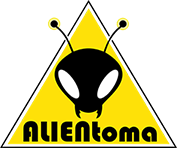| Publication Type: | Journal Article |
| Year of Publication: | 2007 |
| Authors: | A. Potasov, La Salle, J., Blumberg, D., Brand, D., Saphir, N., Assael, F., Fisher, F., Mendel, Z. |
| Journal: | Phytoparasitica |
| Volume: | 35 |
| Pagination: | 50-76 |
| Keywords: | damage, egg distribution, eucalyptus, Eulophidae, feed effect, gall, host plants, leaf survival, Ophelimus maskelli, seasonal development |
| Abstract: | Ophelimus maskelli (Ashmead) (Hymenoptera: Eulophidae), an invasive species in the Mediterranean area that occurs naturally onEucalyptus camaldulensis at Wagga Wagga in New South Wales, was studied in Israel on the same host plant. The most distinctive characteristic of O. maskelli as compared with other congeners is the presence of only a single seta on the submarginal vein. O. maskelli shows a clear tendency to oviposit in developed, immature leaves, and it prefers to oviposit on an area of the leaf blade near the petiole. The female lays an average of 109 eggs when maintained on water alone. The egglaying distribution tended towards aggregation, and the same tendency has also been observed within and among trees. The wasp prefers to attack the lower canopy. The gall diameter ranged from 1.2 to 0.9 mm, and gall density from 11.5 to 36.0 galls cm−2, respectively. The typical color of the gall appeared as soon as third instar larva developed. Galls on shaded leaves remained green or greenish-yellow, whereas those that were exposed to the sun were reddish. O. maskelli produces three generations per year in Israel. High flight occurs among the spring generations, starting in early March. The wasps were attracted to green sticky plates much more than to the other tested colors. Heavy galling by O. maskelli results in premature shedding of the leaves, soon after the emergence of the wasps. Among the 84 eucalyptus species tested, the following 14 species were found to be suitable hosts:E. botryoides, E. bridgesiana, E. camaldulensis, E. cinerea, E. globulus, E. gunii, E. nicholii, E. pulverulenta, E. robusta, E. rudis, E. saligna, E. tereticornis and E. viminalis. This study focused on morphological and development characters that can clearly distinguish O. maskelli from Ophelimus eucalypti Gahan, and on examining the effect of crossing between eucalyptus species on the development possibilities of the wasps. Also considered were the effect of the food on adult survival, the competition between the eulophid gall makerLeptocybe invasa Fisher & LaSalle and O. maskelli, the heavy damage inflicted on eucalyptus, and the health problems and nuisance to people caused by the wasp near heavily infested trees during the mass emergence of adults. |
| DOI: | 10.1007/BF02981061 |
